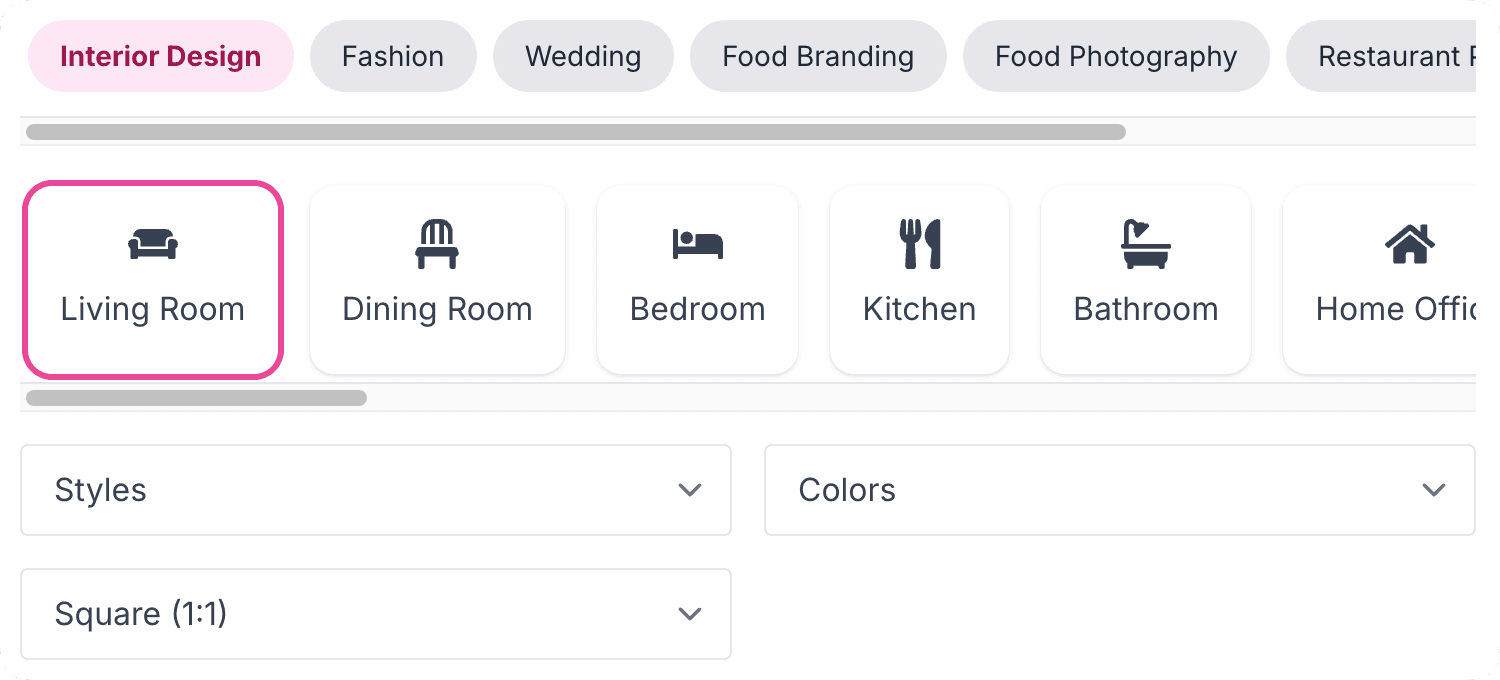
MoodBoardAI: Complete Buyer's Guide
Bridging creative visualization and product implementation
MoodBoardAI positions itself as a specialized AI design solution that bridges the gap between creative visualization and product implementation through integrated shopping list automation. Unlike enterprise-focused platforms such as Adobe Firefly or collaborative tools like Miro, MoodBoardAI targets interior designers and fashion creatives who need to convert mood boards into actionable purchasing workflows[54][56][67].
Market Position & Maturity
Market Standing
MoodBoardAI occupies a specialized niche within the broader AI design market, positioning itself distinctly from enterprise leaders like Adobe Firefly and collaborative platforms such as Miro through its product-sourcing integration focus[54][56][67].
Company Maturity
Company maturity indicators show operation since 2020 with expansion into a bundled product suite, though comprehensive financial stability metrics and customer scale documentation remain limited in public sources[54].
Growth Trajectory
Growth trajectory evidence includes product suite expansion and maintained market presence, though specific funding status, revenue metrics, or customer growth indicators are not publicly documented[54][67].
Industry Recognition
Industry recognition appears limited to customer satisfaction ratings rather than formal awards or analyst recognition. The platform achieves 4.0/5 average ratings with 5/5 specifically for interior design applications on Product Hunt[71][72][73].
Strategic Partnerships
Strategic partnerships and enterprise relationships are not publicly disclosed, suggesting a direct-to-consumer business model rather than channel partnerships or enterprise ecosystem integration[54][67].
Longevity Assessment
Longevity assessment requires careful evaluation given limited public financial information and customer scale documentation. While the platform demonstrates operational stability since 2020, the absence of comprehensive business metrics necessitates additional due diligence for organizations requiring high vendor stability confidence[54][67].
Proof of Capabilities
Customer Evidence
Customer adoption evidence demonstrates specific success in interior design applications, with users like Eileen Bao describing MoodBoardAI as 'a game-changer' for rapid concept visualization[73].
Quantified Outcomes
Quantified performance outcomes include 2-7 minute generation times versus traditional 45-180 minute workflows, representing up to 96% time reduction for initial concept creation[54][55]. The Pro tier provides 50 AI generations monthly at $180 annually, delivering $3.60 per generation cost efficiency compared to traditional photoshoot expenses of $300-$5,000 per project[67][68].
Case Study Analysis
Implementation success patterns emerge among freelancers and small design studios who leverage the integrated product sourcing workflow effectively[56][68][72].
Market Validation
Market validation indicators include maintained operation since 2020 and expansion into a bundled product suite, though comprehensive customer scale metrics remain undocumented[54].
Competitive Wins
Competitive positioning evidence shows differentiation through product-to-purchase integration that competitors don't offer, addressing a specific workflow gap for design professionals requiring immediate sourcing capabilities[54][56][67].
AI Technology
MoodBoardAI's AI architecture centers on prompt-driven visual generation with integrated commerce intelligence that distinguishes it from pure visualization tools. The platform processes natural language descriptions to create mood boards while simultaneously analyzing visual elements for product matching and shopping list automation[54][67].
Architecture
The technical foundation operates through web-based deployment requiring no specialized hardware or installation, contrasting with enterprise solutions that demand significant IT infrastructure[54][67].
Primary Competitors
Adobe Firefly, MyMap.AI, Miro[54][56][67].
Competitive Advantages
Competitive advantages include workflow-specific integration, accessible pricing for SMB market, and immediate deployment capability without IT infrastructure requirements[54][67].
Market Positioning
Market positioning places MoodBoardAI in the specialized SMB segment rather than competing directly with enterprise solutions dominating broader market share[54][67].
Win/Loss Scenarios
Win/loss scenarios favor MoodBoardAI when organizations prioritize product sourcing integration, cost-efficiency, and rapid deployment over enterprise governance and comprehensive support[54][56][67].
Key Features

Pros & Cons
Use Cases
Pricing
Featured In Articles
Comprehensive analysis of AI Moodboard Creators for AI Design for AI Design professionals. Expert evaluation of features, pricing, and implementation.
How We Researched This Guide
About This Guide: This comprehensive analysis is based on extensive competitive intelligence and real-world implementation data from leading AI vendors. StayModern updates this guide quarterly to reflect market developments and vendor performance changes.
73+ verified sources per analysis including official documentation, customer reviews, analyst reports, and industry publications.
- • Vendor documentation & whitepapers
- • Customer testimonials & case studies
- • Third-party analyst assessments
- • Industry benchmarking reports
Standardized assessment framework across 8 key dimensions for objective comparison.
- • Technology capabilities & architecture
- • Market position & customer evidence
- • Implementation experience & support
- • Pricing value & competitive position
Research is refreshed every 90 days to capture market changes and new vendor capabilities.
- • New product releases & features
- • Market positioning changes
- • Customer feedback integration
- • Competitive landscape shifts
Every claim is source-linked with direct citations to original materials for verification.
- • Clickable citation links
- • Original source attribution
- • Date stamps for currency
- • Quality score validation
Analysis follows systematic research protocols with consistent evaluation frameworks.
- • Standardized assessment criteria
- • Multi-source verification process
- • Consistent evaluation methodology
- • Quality assurance protocols
Buyer-focused analysis with transparent methodology and factual accuracy commitment.
- • Objective comparative analysis
- • Transparent research methodology
- • Factual accuracy commitment
- • Continuous quality improvement
Quality Commitment: If you find any inaccuracies in our analysis on this page, please contact us at research@staymodern.ai. We're committed to maintaining the highest standards of research integrity and will investigate and correct any issues promptly.